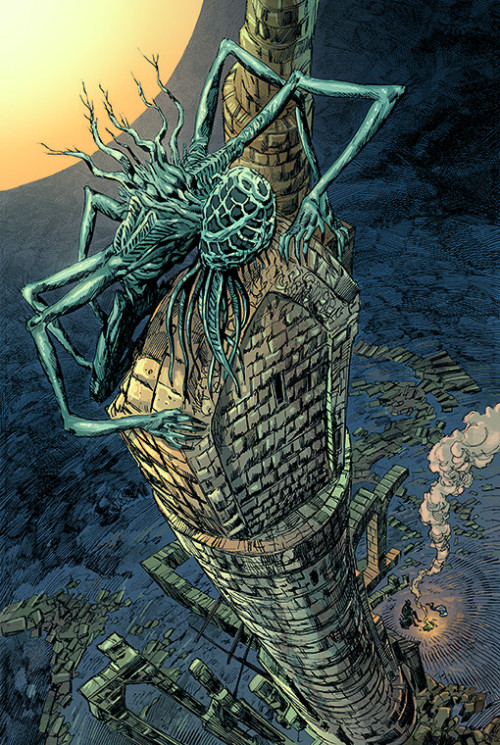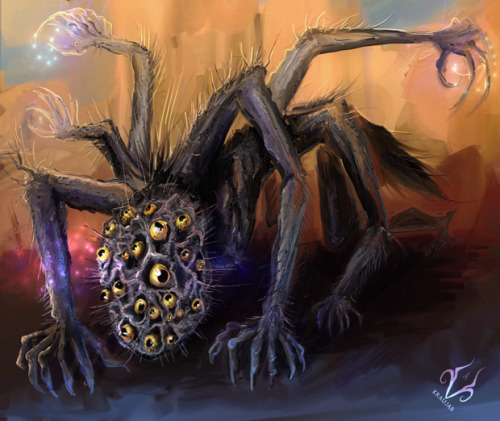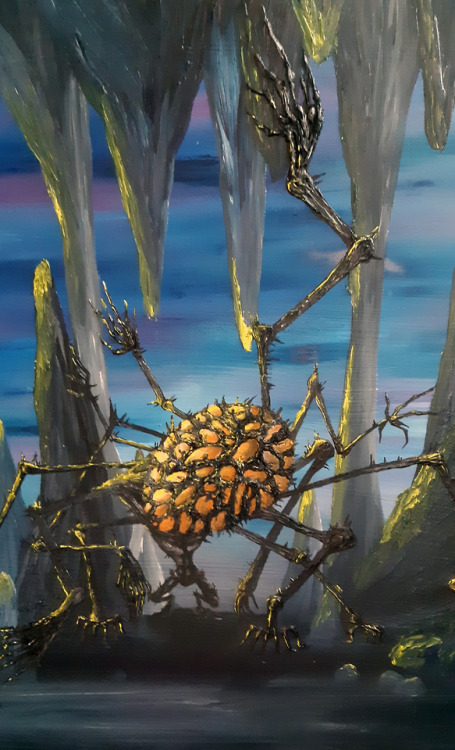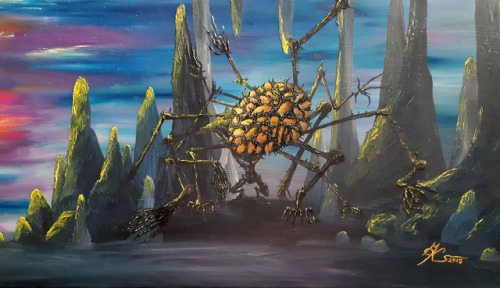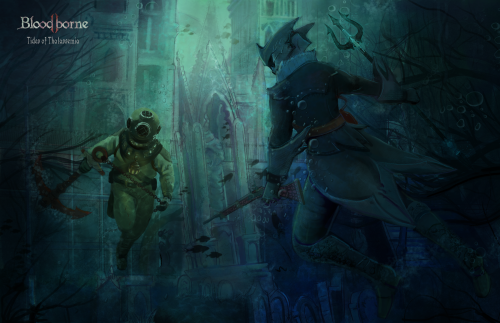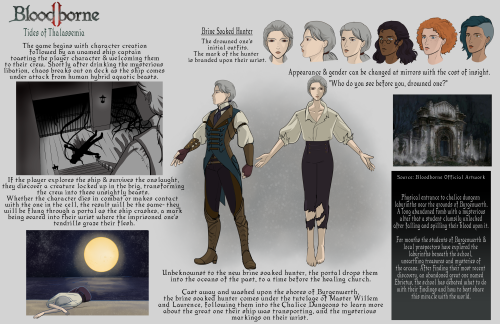#amygdala
A new study in Biological Psychiatry explores the influence of oxytocin
Difficulty in registering and responding to the facial expressions of other people is a hallmark of autism spectrum disorder (ASD). Relatedly, functional imaging studies have shown that individuals with ASD display altered brain activations when processing facial images.
The hormone oxytocin plays a vital role in the social interactions of both animals and humans. In fact, multiple studies conducted with healthy volunteers have provided evidence for beneficial effects of oxytocin in terms of increased trust, improved emotion recognition, and preference for social stimuli.
This combination of scientific work led German researchers to hypothesize about the influence of oxytocin in ASD. Dr. Gregor Domes, from the University of Freiburg and first author of the new study, explained: “In the present study, we were interested in the question of whether a single dose of oxytocin would change brain responses to social compared to non-social stimuli in individuals with autism spectrum disorder.”
They found that oxytocin did show an effect on social processing in the individuals with ASD, “suggesting that oxytocin may help to treat a basic brain function that goes awry in autism spectrum disorders,” commented Dr. John Krystal, Editor of Biological Psychiatry.
To conduct this study, they recruited fourteen individuals with ASD and fourteen control volunteers, all of whom completed a face- and house-matching task while undergoing imaging scans. Each participant completed this task and scanning procedure twice, once after receiving a nasal spray containing oxytocin and once after receiving a nasal spray containing placebo. The order of the sprays was randomized, and the tests were administered one week apart.
Using two sets of stimuli in the matching task, one of faces and one of houses, allowed the researchers to not only compare the effects of the oxytocin and placebo administrations, but also allowed them to discriminate findings between specific effects to only social stimuli and non-specific effects to more general brain processing.
What they found was intriguing. The data indicate that oxytocin specifically increases responses of the amygdala to social stimuli in individuals with ASD. The amygdala, the authors explain, “has been associated with processing of emotional stimuli, threat-related stimuli, face processing, and vigilance for salient stimuli”.
This finding suggests oxytocin might promote the salience of social stimuli in ASD. Increased salience of social stimuli might support behavioral training of social skills in ASD.
These data support the idea that oxytocin may be a promising approach in the treatment of ASD and could stimulate further research, even clinical trials, on the exploration of oxytocin as an add-on treatment for individuals with autism spectrum disorder.
Amygdala Found to Have Role in Important Pre-Attentive Mechanism in the Brain
We’re all familiar with the startle reflex – that sudden, uncontrollable jerk that occurs when we’re surprised by a noise or other unexpected stimulus. But the brain also has an important pre-attentive mechanism to tamp down that response and tune out irrelevant sounds so you can mind the task in front of you.
This pre-attentive mechanism is called sensorimotor gating and normally prevents cognitive overload. However, sensorimotor gating is commonly impaired in people with schizophrenia and other neurological and psychiatric conditions, including post-traumatic stress disorder (PTSD) and obsessive-compulsive disorder (OCD).
“Reduced sensorimotor gating is a hallmark of schizophrenia, and this is often associated with attention impairments and can predict other cognitive deficits,” explains neuroscientist Karine Fénelon, assistant professor of biology at the University of Massachusetts Amherst. “While the reversal of sensorimotor gating deficits in rodents is a gold standard for antipsychotic drug screening, the neuronal pathways and cellular mechanisms involved are still not completely understood, even under normal conditions.”

(Image caption: Mouse brain stem inhibitory neurons (green) activated by amygdala inputs (magenta neuronal processes))
To assess sensorimotor gating, neuroscientists measure prepulse inhibition (PPI) of the acoustic startle reflex. PPI occurs when a weak stimulus is presented before a startle stimulus, which inhibits the startle response.
For the first time, Fénelon and her UMass Amherst team – then-Ph.D. student Jose Cano (now a postdoctoral researcher at the University of Rochester Medical Center) and Ph.D. student Wanyun Huang – have shown how the amygdala, a brain region typically associated with fear, contributes to PPI by activating small inhibitory neurons in the mouse brain stem. This discovery, published in the journal BMC Biology, advances understanding of the systems underlying PPI and efforts to ultimately develop medical therapies for schizophrenia and other disorders by reversing pre-attentive deficits.
“Until recently, prepulse inhibition was thought to depend on midbrain neurons that release the transmitter acetylcholine,” Fénelon explains. “That was because studies of schizophrenia patients involved deficits in the cholinergic system.”
But there exists a “super cool neuroscience tool” – optogenetics – which allows scientists to use light to pinpoint and control genetically modified neurons in various experimental systems. “It is very specific,” Fénelon says. “Before this, we couldn’t pick and choose which neurons to manipulate.”
Their challenge was to use optogenetics to identify which circuits in which parts of the brain were involved in PPI. “We wanted to know what brain region connects to the core of the startle inhibition circuit in the brain stem, so we put tracers or dye to visualize those neurons,” Fénelon says. “With this approach we were able to identify amygdala neurons connected to the brain stem area in the center of the startle inhibition circuit.”
Next, they tested with optogenetic tools whether this connection between the amygdala and the brain stem was important for startle inhibition. “We know that in the brain of schizophrenia patients the function of the amygdala is also altered, so it made sense to us that this brain region was relevant to disease,” Fénelon says.
By photo-manipulating amygdala neurons in mice, they showed that the amygdala appeared to contribute to PPI by activating brain stem inhibitory, or glycinergic, neurons. Specifically, PPI was reduced by either shutting down the excitatory synapses between the amygdala and the brain stem or by silencing the brain stem inhibitory neurons themselves. “Interestingly, the PPI reduction measured as a result of these photo manipulations mimicked the PPI reduction observed in humans with schizophrenia and in mouse models of schizophrenia,” Fénelon says.
To better detail this connection, Fénelon and team used electrophysiology along with optogenetics to record the electrical activity of individual neurons taken from thin brain sections, in vitro. “This very precise yet technically challenging recording method allowed us to confirm without any doubt that amygdala excitatory inputs activate those glycinergic neurons in the brain stem,” Fénelon says.
She calls this finding “a piece of the puzzle” that pinpoints the prepulse inhibition circuit. Now she’s working in her lab using this new information to identify other brain pathways and attempt to reverse pre-attentive deficits in a mouse model of schizophrenia. Such a breakthrough would allow researchers to begin to develop drugs that can more precisely target treatment of pre-attentive problems.
Release of Chemical Dopamine in Infant Brains May Help Control Early Social Development
Changing levels of the chemical dopamine, a chemical most associated with motivation, may help explain why stressful experiences during infancy can lead to lasting behavioral issues, a new study in rodents shows.
Experts have long understood that negative experiences early in life among rodents and other mammals, including humans, can affect later social development. Past studies in rats, for example, have found that limited bedding causes mother rats to roughly handle pups, impacting pups’ social behavior throughout their lives. However, exactly what changes occurred in the brain as a result of such adversity remained unclear.
In a study led by researchers at NYU Grossman School of Medicine, investigators tied repeated stress during infancy to increased dopamine levels in the basolateral amygdala (BLA), a brain region that plays a role in memory formation. When they housed mother rats and their new pups in stressful conditions while rearing their young, the stressed pups had about twice as much BLA activity compared with those raised in a more comfortable nest. In turn, the former group spent at least 90 percent less time near their mothers and more than 30 percent less time near other pups compared with the latter group.
“Our findings suggest that repeated dopamine release in the basolateral amygdala plays a key role in infant social development,” says study lead author Maya Opendak, PhD. “As a result, this region of the brain may be a promising target for understanding or even treating psychiatric disorders that can interfere with social interaction, such as autism,anxiety, and depression.”
As part of the study, the study authors artificially blocked dopamine release in the BLA in the distressed infants and found that social behavior returned to normal. By contrast, increasing dopamine levels in pups raised in non-stressful conditions impaired their social behavior.
Dr. Opendak, a postdoctoral research fellow in the Department of Child and Adolescent Psychiatry at NYU Langone Health, notes that elevated BLA activity and social impairment only occurred in pups that were stressed in their mother’s presence. If they experienced stress alone, they showed no sign of these issues. Dr. Opendak suggests that the repeated activation of the BLA, already known to play a key role in learning about threats, prompts infants to associate their mother with danger.
“Our investigation offered us a clearer look at how specific brain mechanisms link stressful experiences during infancy to lifelong social behavior problems,” says study senior author Regina M. Sullivan, PhD. “We can take this same approach to explore other areas of brain development, such as memory, learning, and threat recognition,” adds Dr. Sullivan, a professor in the Department of Child and Adolescent Psychiatry.
For the study, published online in the journal Neuron, the research team observed the behavior of hundreds of rat pups. Some rodent mothers were provided limited materials with which to build a nest. In a series of social behavior tests, the study authors measured the length of time pups approached their mothers or peers after five days of living in these stressful conditions. According to the findings, the longer the stress exposure went on, the less often the pups would approach their mothers.
To examine the role of dopamine during these early life experiences, researchers used drugs that block the chemical’s release in the brain. They also stimulated dopamine release in individual brain cells using light to test the impact of the chemical on social behavior after distress.
Dr. Sullivan says the research team next plans to expand the investigation to other brain areas involved in processing threat and reward.
She cautions that the study only explored the effect of a single chemical in one brain pathway, noting that social behavior involves an intricate network of cells and other pathways that still needs to be uncovered.

Mammalian motivation circuits: Maybe they’re born with it
Are we born to fear punishment or crave rewards? Or do those capacities evolve with experience? Cold Spring Harbor Laboratory (CSHL) Professor Bo Li and his lab found that mice have pre-programmed circuits that process “positive” and “negative” stimuli. These neurons are found in the mouse’s amygdala, a section of the brain that deals with learning rewards and punishments. The researchers’ findings may be useful for studying neurological and psychiatric disorders in humans.
Previously, Li and his colleagues discovered that the amygdala is the hub for both fear- and reward-based learning. Xian Zhang, a postdoc in Li’s lab, wanted to find out the exact circuitry that takes in positive or negative stimuli that trigger either pleasure or fear.
In an experiment similar to how Pavlov’s dog was taught to associate a bell sound with food, Li and Zhang trained mice to connect certain sounds with either a reward (a refreshing drink of water) or a punishment (an annoying puff of air to the whiskers). Then, in collaboration with CSHL Adjunct Professor Z. Josh Huang, they developed a method to mark and observe different neurons in the mouse amygdala. They discovered two distinct types of neurons: one that was activated when the mouse heard the reward sound, and one that was activated when it heard the punishment sound. Both neuron populations exist throughout the entire amygdala. Li explains:
“They’re spatially intermingled. When you start to image them, you know that some of the neurons respond only to good things, some of the neurons respond only to bad things, just like the pepper and the salt mixed together, and they do different jobs.”
The researchers were surprised to discover that some amygdala cells are hardwired to process motivation stimuli, even without training. A puff of air or sip of water triggered the same neurons in both untrained and trained mice.
Zhang thinks their findings may be relevant to human psychiatric disorders like depression. He says:
“If you have an imbalanced bit in different neural circuits, you probably have a deficit of your motivation, like you lost your interest in pursuing rewards, or you lost your interest in avoiding punishment. I think this finding is important to know for the future, to help people with depression or other mental disorders.”
In mouse models of depression, animals lack the motivation to seek rewards or avoid punishments. Li and Zhang hope that this study, published in Nature Neuroscience, will help researchers understand how motivation works or goes wrong in mammalian brains.
(Image caption: Cold Spring Harbor Laboratory Professor Bo Li and his postdoc Xian Zhang uncovered distinct hardwired circuits in this structure responsible for processing “positive” and “negative” stimuli that lead to reward or punishment for a mouse. In this image of a mouse amygdala, the green neurons and their connections process positive stimuli that lead the animal to seek rewards, while the red neurons and their connections process negative stimuli that lead the animal to avoid punishment. Credit: Xian Zhang/Li lab)
Amygdala
Let’s keep it going with Bloodborne fan arts!
Ludwig is next!
If you like my artwork remember you can support it on Patreon! Get ready cuz we are preparing some rewards~
Post link

looking at you with my autistic eyes
I just want a Bloodborne 2.
Made these for a contest last year to pitch a hypothetical sequel idea.
TL;DR Castaway hunter washes up on the shores of Byrgenwerth and meets Laurence. They discover Ebrietus and a masked kid in the dungeons. The sail around, meet some crows, nobles, and see other lands, before encountering Kos in a fishing hamlet. They kill Kos, but this time the hunter and kid are flung into the future. The future is a sunken Yharnam, a world flooded by the Moon Scented hunter who ascended in the previous game. The drowned hunter explores this world and discovers what became of his colleagues and their actions. Now soggy hunter has a choice- undo history, or rebuild the world from the remaining wreckage.
Post link

My drawing of amygdala from the game bloodborne.
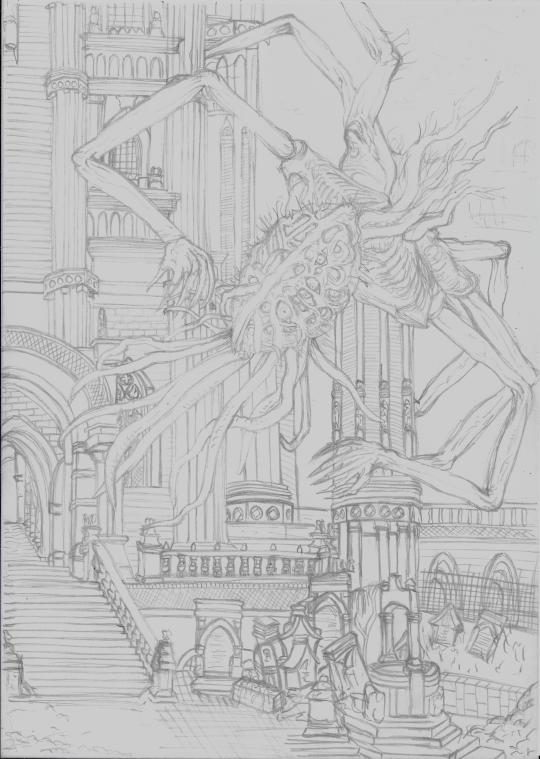
I don’t normally post up unfinished drawings. But I guess to show what most of my drawings start out as before I shade in with pencil.
Another bloodborne drawing of amygdala.
A title ?
I guess it’s funny to me that whenever I started this tumblr page I must have been at least 18 and apparently thought naming it after a line from one of my favourite movies would be cool or edgy maybe . A line from a movie that now seems to me more serious than cool and more close to home than the edgy feel I’d been going for. What’s your diag-nonsense then?
I had thought about not writing this at all and after all what good does it do to dwell on your issues . Maybe this has been my problem all along and infact according to my counsellor perhaps is the same for many people in the West of Scotland . This inability to accept that dwelling on your own thoughts and feeling is not weakness . Beating yourself up for being unable to cope does not make you shit at life .Sharing your most mental thoughts with another can actually be refreshing even if its just to know you arent alone . Its funny to think how readily we read instructions for everything else but when it comes to our own brains - brains that are more complex than your tv or computer we are so ready to just handle them on our own with no guidance and shrug off all the issues.
I recently found myself at a music festival , a music festival that I had been excited for , a music festival that would not be something out of the ordinary for me “normal me ” to attend . Yet we got there and I felt sick, sick to my stomach and I was scared so so scared . I didnt understand why and so like most people when we don’t understand or can’t explain something rationally I shrugged it off and pushed it to one side . Making excuses like I’ve been in the sun too long or I’ve drank too much . Later that evening the feeling grew and I made my partner take me to the medical tent all the while feeling embarrassed and like I was ruining the weekend for other people . It’s there that after many checks I was told that my heart rate was possibly a little high but otherwise I was fine . How do you sit there and tell a medical professional , no I’m not fine and I can’t tell you how far from fine I feel and I think I’m going to die. Well the answer is you don’t, at least not in my case anyway . No I hopped off the bed and thanked him for his time and embarrassingly went back to my partner having to tell him it was nothing and return to our friends . Everyday for the rest of that festival I didn’t drink because I needed to feel in control of whatever this was my body was doing and so I got up and put on a brave face and did my best to go have fun . Every night though after the last band I’d feel so so tired more tired than I’ve ever felt before and I couldn’t stay awake and party with my friends. I Didn’t realise how exhausting it is to pretend you are okay all the time . This was just the beginning for me .
Right at the end of this festival I finally decided to try tell my partner what was going on as ridiculous as the sensible part of my brain thought that was going to sound . I did my best to explain the need to be sober to be in control just incase I got unwell or the overwhelming sense of dread that made no sense to me . I’ve been in large crowds before and I love music and I’m not unwell so what could this be . My partner was great I can’t fault him he comforted me and promised me as soon as we got home I could see a doctor and we would figure this all out .
So now I’m a few months on and my final diagnosis seems to be generalised anxiety disorder specifically health anxiety based . Now before I go into my healing process I want to say how hard it is for me to write that diagnosis . I am not someone that exactly believes in “anxiety” or maybe I should say I didn’t believe . My own father has suffered from depression for many years and I viewed it as an excuse for his bad behaviours and his tendency to mess life up for himself . I was that person moaning about all those people sharing anxiety posts on Facebook and complaining about how badly it messes with their lives . I thought anxiety was just something everyone had at some point and surely if you wanted to overcome it well then you could. I’d complain often about people not helping themselves but continuing to post these cries for attention . How wrong I have been . I think possibly I knew at that festival what it was I was experiencing but it felt like there is a stigma attached to saying I’m having an anxiety attack or I think I have anxiety . One that made me feel embarrassed that this could be happening to me . I don’t worry about all these things that I’m worrying about , normal me doesn’t burst into tears everytime I get a twinge in my head, old me didn’t wear a fitbit to track my heart rate and call the doctor everytime I noticed an anomaly. I think it took a long time for me to process that all those versions are the same me . Where am I now ? After a few months of some highs and extreme lows and plenty of tears I found the strength to admit I needed more help to conquer this. I signed up to counselling sessions through occupational health and began seeing a wonderful woman Maragaret . As you can imagine I went to my session a sceptic or at least doubting that talking about it more was going to solve it but alas you cant moan about others not helping themselves if you aren’t willing to do it yourself . My first session I have to admit I mostly cried , I couldn’t tell whether they were sad or happy tears but there was relief there . Just relief to speak about it , relief to finally admit this is real and to finally stop playing it down for the sake of people around me . We established straight away that I am not alone and what I was going through is not unusual . We also talked about loss and I couldn’t understand why loss related to my situation as I had automatically assumed that loss refereed only to losing a person . Maragaret was quick to tell me I had lost a person , id lost me or at least the me I was familiar with the me that ended up with a kidney infection because I couldn’t be bothered going to the doctors when I was in pain and not this new me that poked and prodded herself so much it was no wonder I was worried about that weird red mark on my wrist or that tender feeling near my knee . In the past few months I had been to the hospital convinced I was having a heart attack, the doctors because I was so sure I had a blood clot in my leg and then received a referral for the headache clinic because I was so sure I had braintumours . Now writing this I know it’s total nonsense what person in their right mind does those things. Well apparently I did … Some days it got so bad I thought I might just go to A&E and stand and shout till they gave me all the scans and tests that I thought were going to finally put my mind at ease but of course it doesn’t work like that. So loss I had infact lost myself.
I was given a task to write down things the little evil person on my shoulder might say to me and I did and when I read it back they were awful . It was then ten times worse when Margaret read them out , like really how can you help yourself when those are the ways you put yourself down all the time . So compassion, compassion was a lesson to learn for me . A way to make myself take time out in an anxiety fueled situation and compassionately talk myself down and give rational , sensible advice that didn’t involve just yelling things at myself for not working how I think I should . For not being good enough to go out and enjoy something that should be happy without ruining it all being a panicked mess. So my method as awfully simple as it seems is when the closing black walls start moving their way in I breath and I count and I remind myself that this, this is nothing and that I am 26 and I have already made it through so many things . I am strong and healthy and I have so much to see and I am going to live for this moment right here because as wise Margaret told me “if you have one foot in the past and one in the future you are effectively pissing in the here and now ” .
Be understanding also , I watched a mindfullness seminar recently I believe it might have been on tedtalks . A suggested method from the speaker was to give your brain a name , you know like an old friend . So when your brain starts running off on it’s crazy train pulling out every bad thought and possibility of the day you can answer it . Sensible you can tell Brenda , you know what Brenda I’ve heard what you had to say but I don’t think I’m gonna take that road today . I know it sounds ridiculous but it made me laugh and I liked it and those are small things to live for .
I know this has been a long post but I think I wanted to write about how something that I didn’t believe was real happened to me . I wanted the chance to take back all those negative non believing vibes I’d put out and be upfront and honest about my experience. Life isn’t Instagram perfect and sometimes I think we forget that. I am not healed and I am far from finished my journey but I am happy and well and alive and that right now is more than I’ve felt in months. I wanted to remind anyone going through anything at all that’s it’s alright and it does get better. I wanted to remind myself so I can read back how horrible it was but not to dwell on the bad just to remind myself of how good it feels to have anxiety free days and of how good it feels to know it’s not something to be embarrassed about and I did something about it and I’ll continue doing things about it so that I can live always in the here and now. So don’t forget compassion and understanding and remember to laugh at yourself in between. It’s alright to be a bit crazy

After a long and painful journey, Amygdala finally returns to the dream gate, restoring the light in her Nightopias to their formor glory with the help of NiGHTS, Beginning the process of healing from 200 years of trauma.
Welcome home, starchild.
(DO NOT EDIT OR REPOST)
Thank you to my friend Bo for helping finish this by rendering the gold for me :)

Have mercy on the poor bastard.

